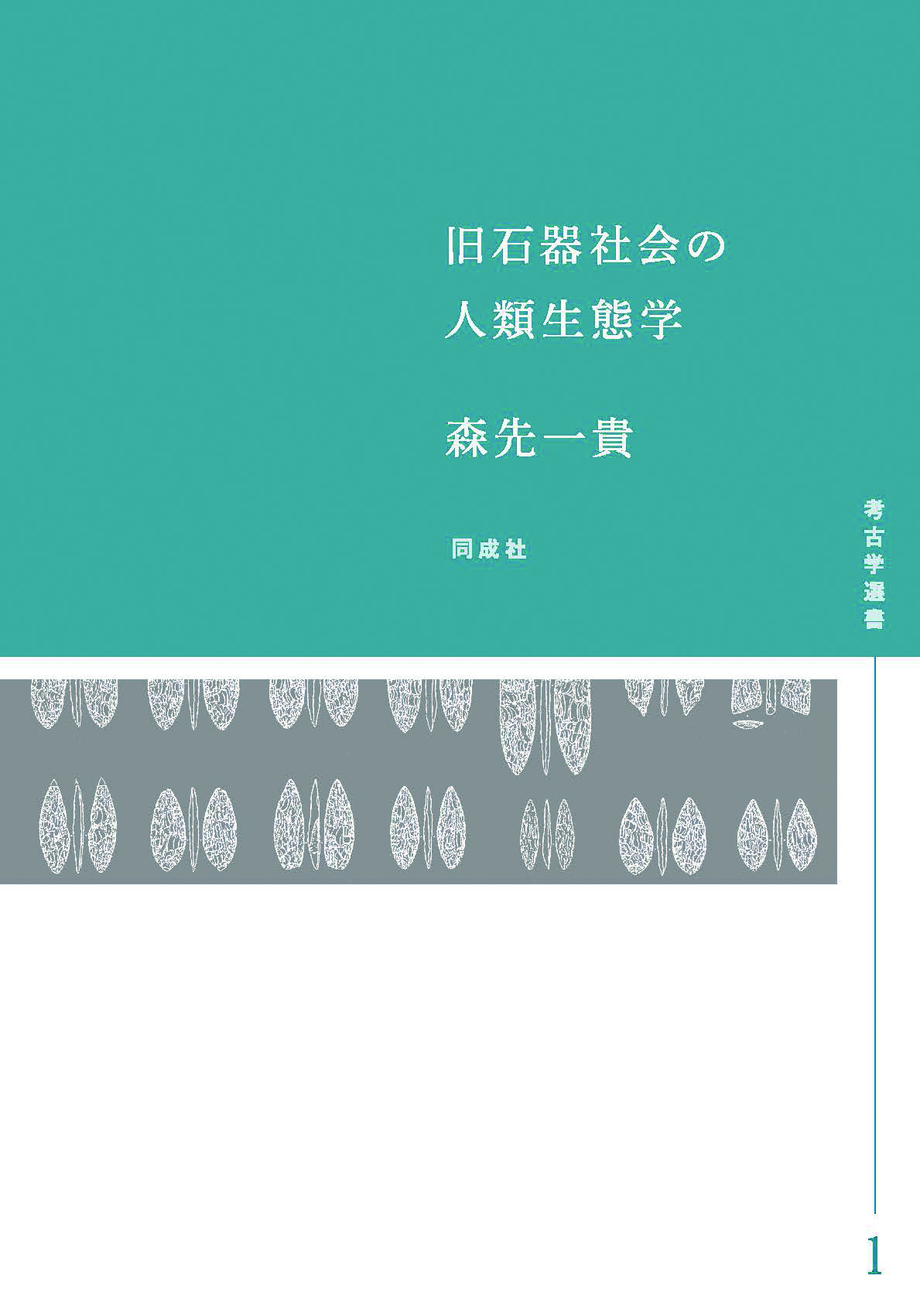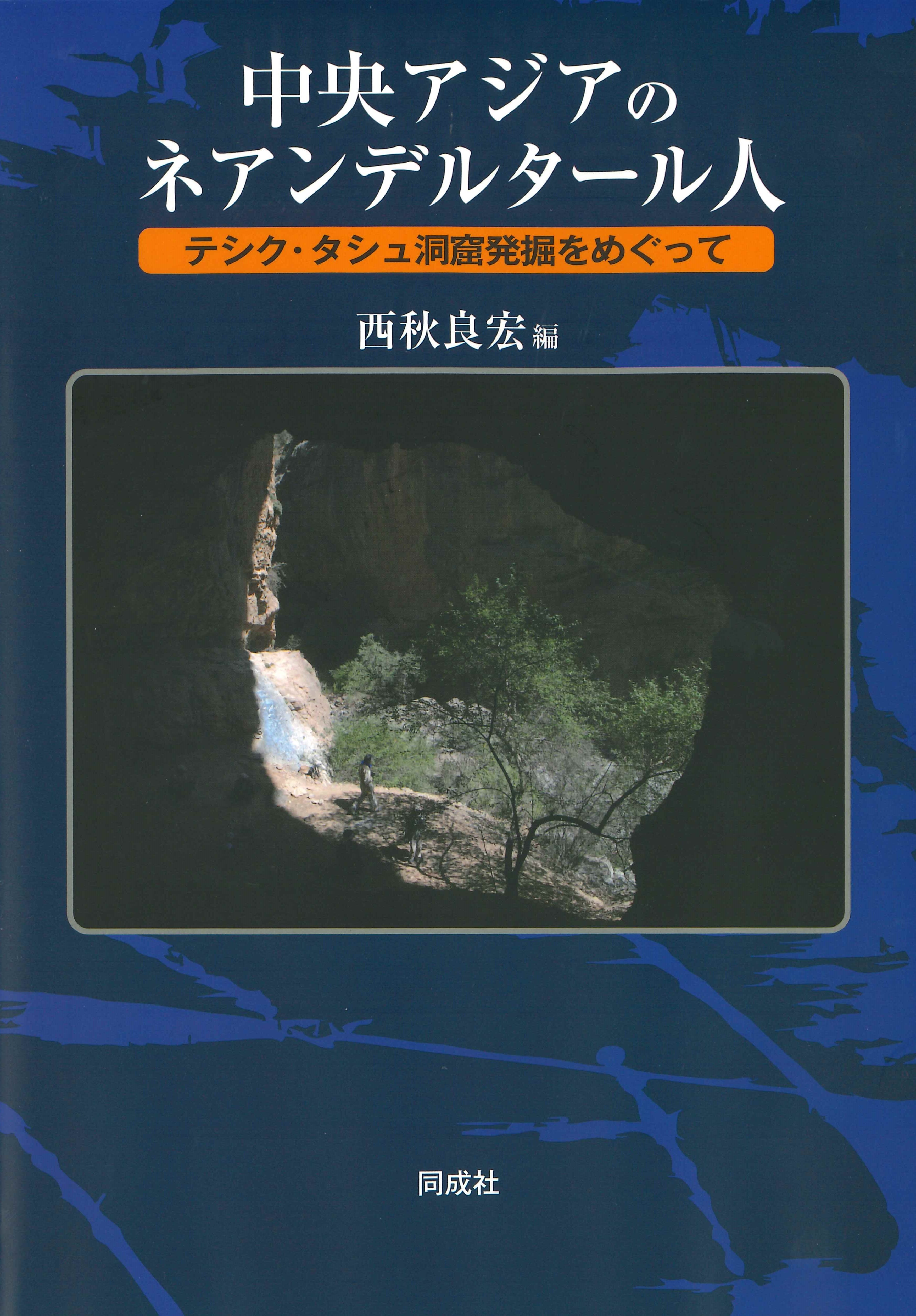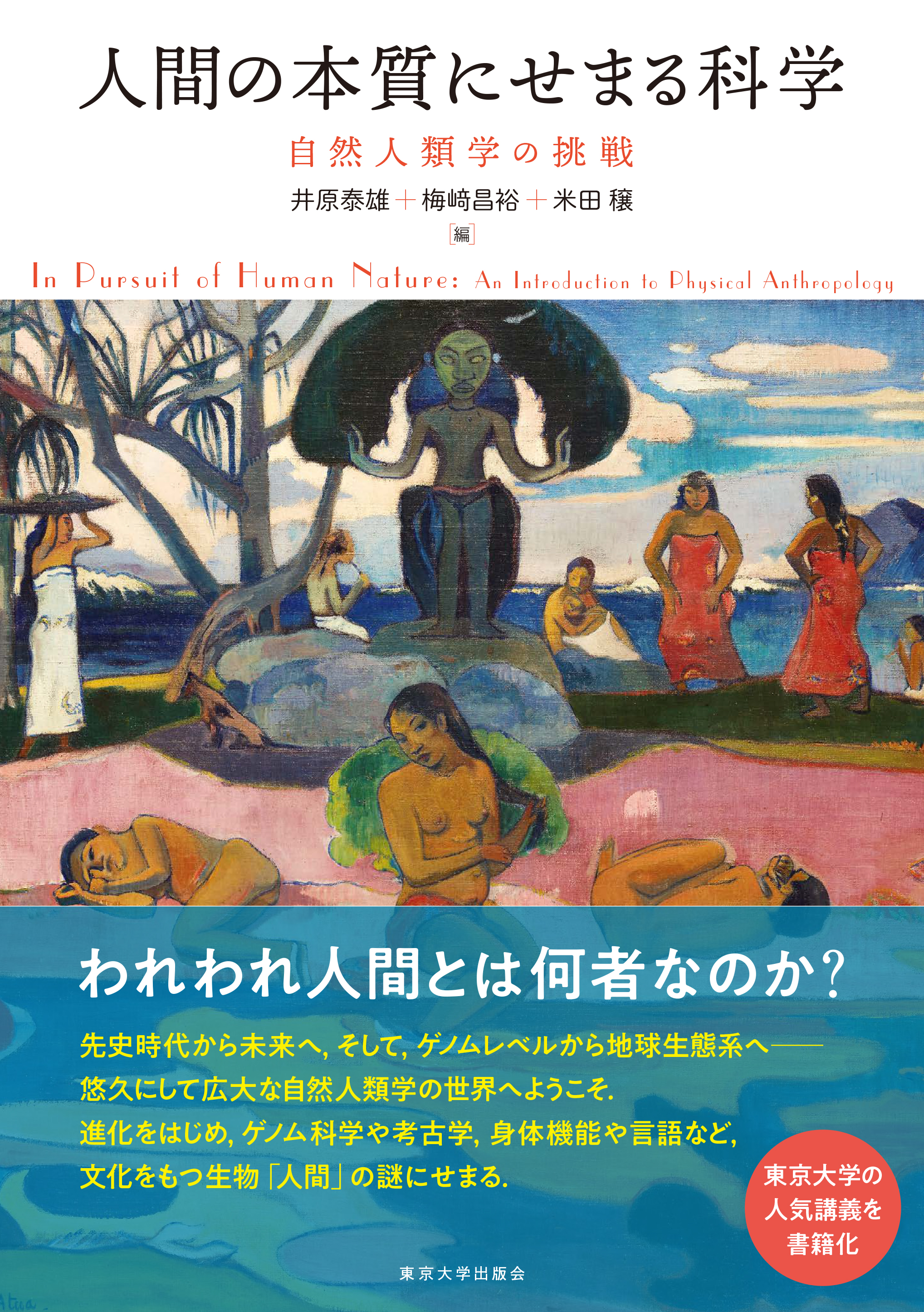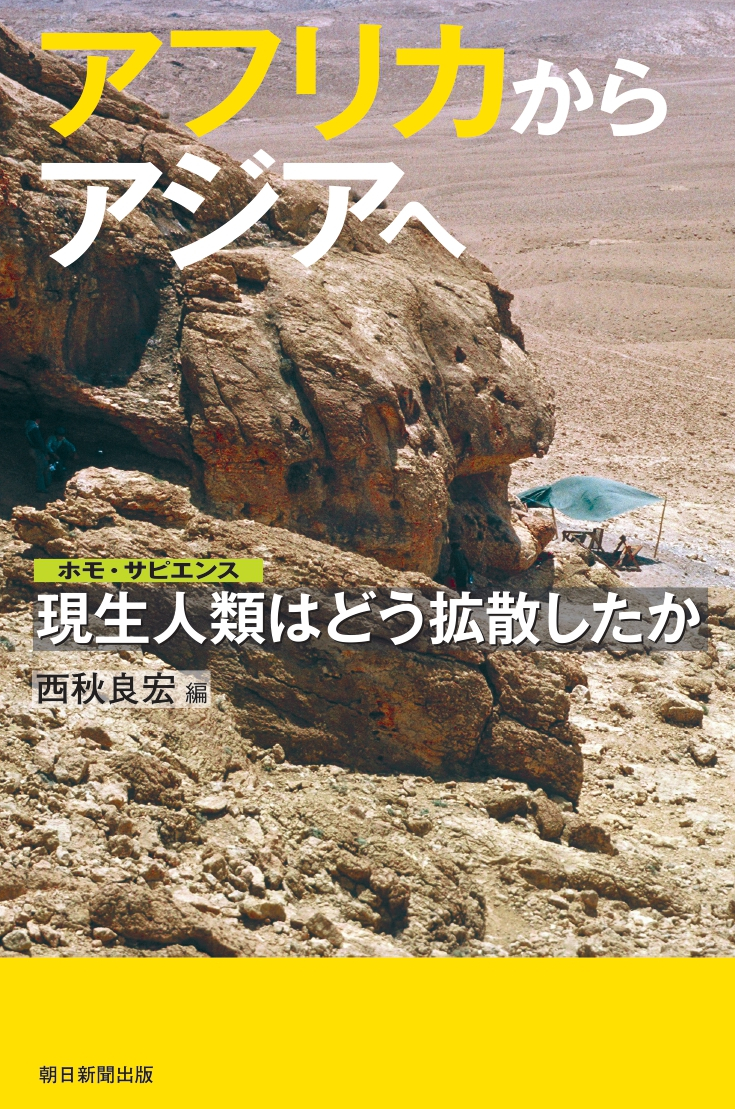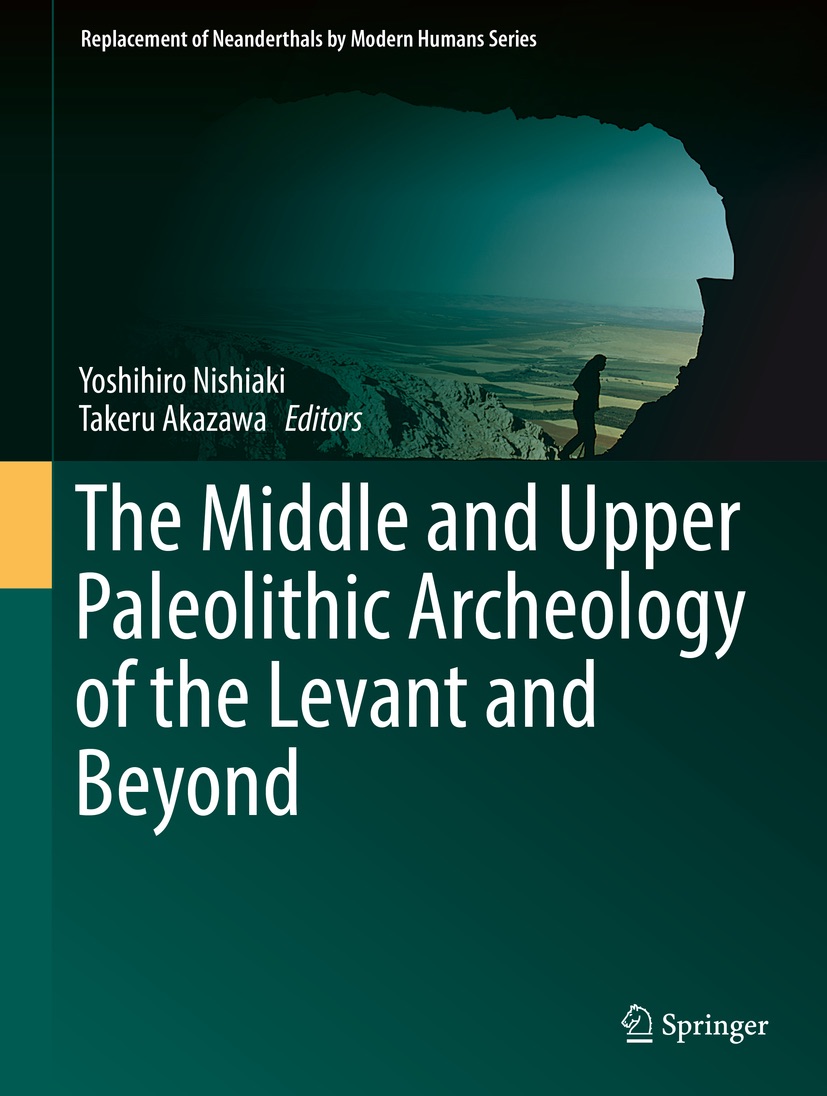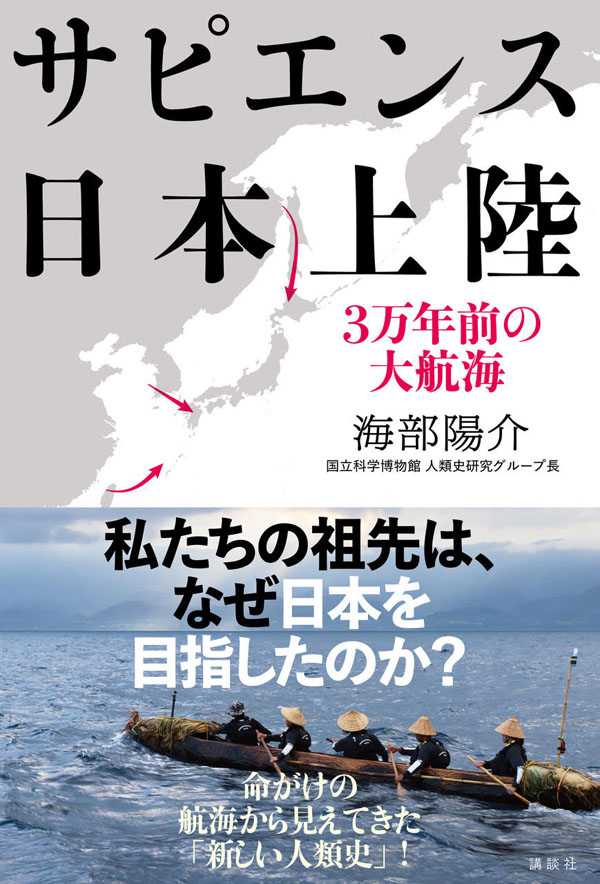
Title
Sapiens Nihon Jōriku (Homo Sapiens First Landed in Japan - Great Voyages 30,000 Years Ago)
Size
338 pages, 127x188mm
Language
Japanese
Released
February 13, 2020
ISBN
978-4-06-518554-4
Published by
Kodansha
Book Info
See Book Availability at Library
Japanese Page
“The first humans to arrive to Japanese archipelago more than 30,000 years ago were voyagers.”
This discovery led to the National Museum of Nature and Science’s “Holistic Reenactment Project of Voyages 30,000 Years Ago,” carried out from 2016 to 2019. This book is a complete written record of this project. The author, the project’s planner and representative, is a scholar of human evolution, who explores the origin of Asian people by reconstructing two million years of human history in Asia, beginning with the emergence of archaic humans, from fossil bones and artifacts.
We Homo sapiens evolved in Africa and spread to the rest of the world over the past 50,000 years. The wave of this great migration reached the Japanese archipelago about 38,000 years ago. It has long been believed that the first human inhabitants of the Japanese archipelago arrived on foot from the Asian continent, then connected to the Japanese islands by a land bridge. The latest geological and biogeographical findings, however, suggest otherwise. They indicate that human history on the Japanese archipelago began with the arrival of groups of humans who crossed the sea during the Upper Paleolithic Period.
Upon closer examination, this theory presents difficulties. The seas surrounding Japan are no ordinary waters. The seas of the Ryukyu Islands are particularly challenging. Flowing through is the Kuroshio Current, one of the strongest currents in world. The distance between the Ryukyu Islands is so great in some cases that the destination is out of view. How did Paleolithic humans cross the sea? What kind of challenges did they have to overcome, and why did they risk their lives to reach faraway islands?
The author believed that the only way to solve this mystery was to reproduce a voyage from that time period, including reconstructing a boat used then. He organized a team of researchers and explorers, 60 members total, to carry out an experimental voyage. Leading anthropologists, archaeologists, ethnographers, and oceanographers gathered to study topics such as ocean currents and human migration during the Paleolithic era and boats used 30,000 year ago. Repeating experiments, they developed the best model for Paleolithic seafarers. Following this model, explorers proficient in sea-paddling (sea kayakers) set out on a voyage. The project was a collaboration by scientists and adventurers to reproduce the past as thoroughly as possible.
The researchers carried out experiments yielding unpredictable results over several years. The first attempted voyages using a reed raft and a bamboo raft ended in failure. Not giving up, in summer 2019 the team’s kayakers succeeded in crossing the sea from Taiwan to Yonaguni Island in a logboat. The entire process can be considered a virtual historical experience of human beings’ setting across the sea with their invention of boats. The project achieved numerous valuable discoveries not possible with ordinal theoretical research. Among the findings, the greatest can be said to be the sweeping reconsideration of Paleolithic humans 30,000 years ago as “primitive man.”
The experimental voyage has been introduced through a variety of media, including a TV program by NHK. From its inception, this project envisioned sharing its findings with the public and was planned as an open science endeavor. To secure funding, the National Museum of Nature and Science launched its first crowdfunding effort and succeeded in raising approximately 60 million yen, increasing public awareness of the project. This book describes the inner workings of this open science project.
(Written by KAIFU Yosuke, Professor, The University Museum / 2020)
Related Info
Holistic Reenactment Project of Voyages 30,000 Years Ago (National Museum of Nature and Science, Tokyo)
https://www.kahaku.go.jp/research/activities/special/koukai/
Explorers successfully voyage to Japan in primitive boat in bid to unlock an ancient mystery (Science Jun.10, 2019)
https://www.sciencemag.org/news/2019/07/explorers-voyage-japan-primitive-boat-hopes-unlocking-ancient-mystery
Interview:
What We Understood through the “Holistic Reenactment Project of the Voyage 30,000 Years Ago” (2016–2019) —A New Frontier of Anthropology and Science from Japan— (Discuss Japan Mar. 16, 2020)
https://www.japanpolicyforum.jp/science/pt20200316214336.html
Lecture:
Lecture "Where did the first Japanese come from? Holistic reenactment project of the voyage 30,000 years ago." (Asahi World Forum 2017 Oct 1-3, 2017)
https://www.asahi.com/eco/awf/en/2017/program/day03_07.html



 Find a book
Find a book


